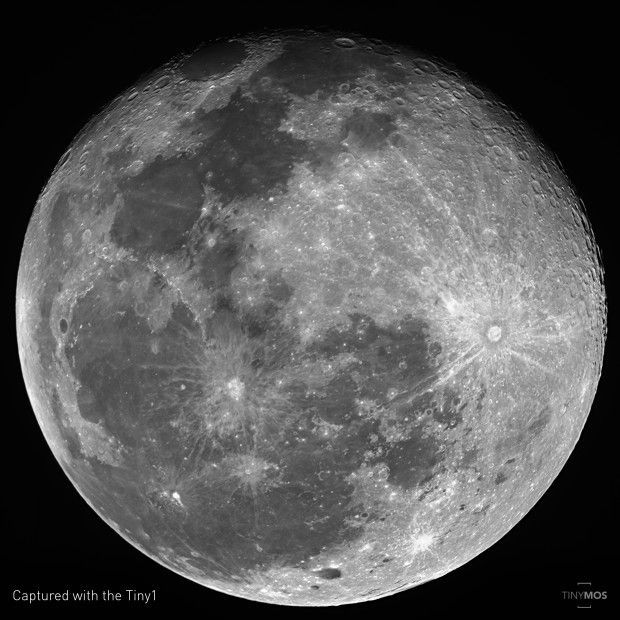What separates a good shot from a professional one when photographing under difficult scenarios, such as the night sky, is having the technical equipment and the ability to take a sharp picture. You’ll need a high-quality telephoto lens (which doesn’t come cheap), and you’ll have to know how to process the final shot on your computer to make it stand out.
For amateurs not familiar with taking a high-quality photo of the stars, TinyMOS, a startup from Singapore, is here to help. Deemed the Tiny1, the pocket-sized camera takes multiple shots of a scene and analyzes them to produce a composite of the sharpest portions.

The moon captured by Tiny1’s prototype.
Similar to how a long road appears to be “waving” on a hot day as moving air distorts the human eye’s perspective on it, this effect is multiplied through the atmosphere while one looks at a faraway planet or star. Taking several photos allows the camera to capture different parts of a scene that may be waving out of focus, verifying that the final shot is the best possible one.
The Tiny1 camera also performs smart processing to reduce image noise (the little imperfections and speckles you sometimes see in photos). Traditionally, the photographer must use dark-frame subtraction, which involves covering the lens and shooting the dark scene to expose any flecks before combining the shots later in Photoshop to remove them from the photo.

But now, with the Tiny1, the camera does it for you by scanning its own sensor – the digital “film” that it captures shots on – each time it is charging. Thus, it has the blueprint of speckles and dots that it’ll use to process the shot. This is especially beneficial in astrophotography since image noise is exposed longer in the darkened scenarios.
The team behind Tiny1 is also building a feature that will show you where to point the camera in the sky, similar to apps like Star Walk.
TinyMOS created a campaign for Tiny1 Indiegogo and hit its goal of $100,000 within just four hours of launching on June 6. The prototype was designed in Germany, but the team intends to move manufacturing to Singapore or Batam so they can carefully watch production.
Via Mashable
Advertisement
Learn more about Electronic Products Magazine





